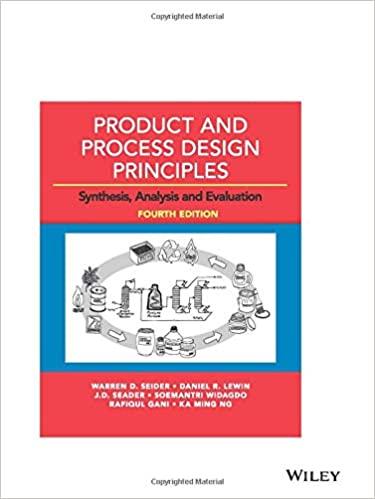An identified chemical product to serve as an API (active pharmaceutical ingredient) in a drug is synthesized
Question:
An identified chemical product to serve as an API (active pharmaceutical ingredient) in a drug is synthesized through a multistage reaction scheme. The key reaction step is hydrophobic, and so all of the water added to the reactor in the previous reaction stages needs to be removed. However, the product is temperature sensitive, so removing the water by evaporation at the water-boiling temperature is not an option. A suggested option is to add a solvent that forms a low-boiling azeotrope with water, has a boiling point lower than \(373 \mathrm{~K}\), has an octanol-water partition coefficient of less than 3 , and is environmentally acceptable. The solvent when added to the system will dissolve the API, and the water will be removed together with some of the solvent by evaporating the minimum-boiling azeotrope. This is a "solvent-swap" operation typical in the development of APIs for drugs and other temperature-sensitive, high-value products. The API has a Hildebrand solubility parameter in the range \(17-20 \mathrm{MPa}^{1 / 2}\).
Formulate the CAMD problem and propose at least five chemicals as desired solvents. Comment on how the solvent candidates can be verified.
Step by Step Answer:

Product And Process Design Principles Synthesis Analysis And Evaluation
ISBN: 9781119355243
4th Edition
Authors: Warren D. Seider, Daniel R. Lewin, J. D. Seader, Soemantri Widagdo, Rafiqul Gani, Ka Ming Ng





